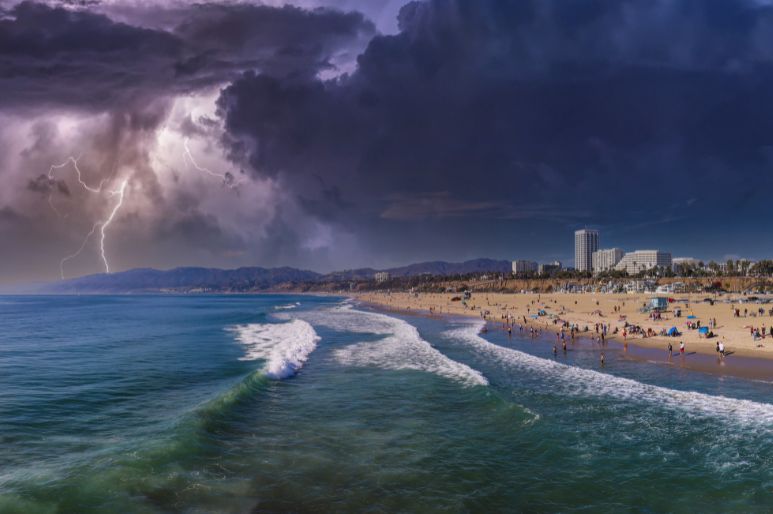Lightning Information for Beach Activities

Lightning can significantly disrupt a relaxing day at the beach. It demands a keen eye on the weather and readiness to abandon outdoor activities at a moment’s notice. The unpredictability of storms can be frustrating, with lightning often appearing even on days forecasted to be clear. However, staying alert, understanding the risks, and taking necessary precautions when on the beach can ensure a safer, more enjoyable beach experience. Learn how to prepare for storm threats at the seaside with our basic guide on lightning information for beach activities.
Know the Warning Signs
Lightning storms often give warning signs before they strike. Darkening skies, changing winds, and the distant rumble of thunder are all indications that a storm is brewing.
Beach authorities often use flag systems to signal potential dangers to beachgoers. A double red flag indicates severe hazards, and swimming is forbidden when these flags are flying. Although the flags can signal a myriad of dangers, if a lightning storm is imminent or already occurring, you will likely see these double red flags displayed. Heeding these warnings and observing the natural signs of an approaching storm can ensure your safety while enjoying beach activities.
Stop All Activities
When you spot the signs of an impending lightning storm, it’s time to stop all activities. Whether you’re swimming, playing beach volleyball, or simply sunbathing, stopping these activities will maximize your safety. Lightning can strike from miles away, even if you can’t see it yet. At the first indication of possible lightning threats, stop all beach activities immediately and seek shelter.
Lightning detectors for UTVs and ATVs can give beachgoers and lifeguards four-wheeling on the beach ample awareness, signaling lightning dangers promptly and encouraging appropriate response protocols.
Make a Quick Exit
As soon as you notice a storm approaching, make a quick exit from the beach. Beaches and beachgoers are vulnerable during a lightning storm due to the lack of substantial shelter in the open landscape.
Additionally, the saltwater, being a good conductor of electricity, can increase the likelihood of lightning strikes and their dispersion over a larger area. Beach umbrellas, volleyball net poles, and ATVs are elevated electrical conductors that are very likely to get struck in the presence of lightning. Evacuating the beach and seeking enclosed shelter is the best safety protocol to avoid lightning danger.
Take Shelter
Once you leave the beach, look for a sturdy, enclosed shelter. Cars with hard tops, buildings, and even covered picnic areas can offer protection from lightning. Avoid isolated trees or open cabins. You can return to the beach 30 minutes after the last lightning alert or warning.
Enjoying the beach should always be balanced with safety. Being aware of general lightning information for beach activities and having lightning detectors easily available in the outdoors guarantees a safer beach experience.
Request a Quote
"*" indicates required fields
At TALOS, Engineering Drives Best-in-Class Quality
Our mission is to provide families with quality products that promote safety and awareness while enjoying leisure activities together. Our patent pending products feature the same technology used in expensive weather stations, but at a fraction of the price.
SHOP NOW
Don’t just take our
word for it.
At TALOS®️, we're developing that technology into new innovative concepts designed for enhancing consumer lifestyles.